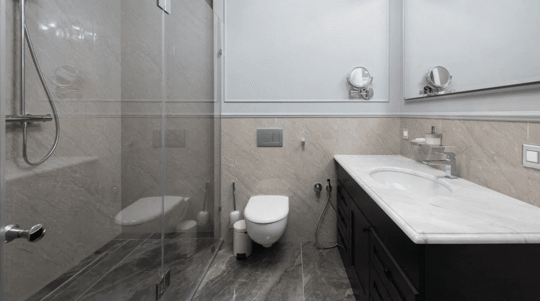Environment-friendly practices are a must these days for all areas of life, including plumbing. How much water do you use every day? EPA claims that an average American family consumes over 300 gallons of water every day. Of the water used, around 24% is for toilets, 20% for showers and another 19% for faucets.
That is a significant amount of water consumption, isn’t it? And obviously, it reflects on your bills as well. So how about bringing this down? Save more water, reduce your monthly expenses and conserve the environment as well. How is this possible? Through eco-friendly plumbing devices – the answer to most of your plumbing woes.
Why Should You Invest in Eco-Friendly Plumbing Devices?
Eco-friendly plumbing devices are investment-worthy investment, simply because they conserve water while helping you save money. There may be some upfront costs involved, but focus on the long run and assess the benefits.
Top Eco-Friendly Plumbing Devices
Dual Plumbing Systems
The basic aim of a dual piping system, also referred to as a dual plumbing system, is water conservation. This system separates water into different types: reclaimed and potable. Reclaimed water is utilized for flushing the toilet, irrigation and other similar uses, whereas potable water is used for drinking, cooking and washing. Reclaimed water is actually wastewater that has been treated and made fit for general use. But nonetheless, it shouldn’t be used for cooking and drinking.
An alternative to dual plumbing system is a grey water system, which reclaims water that passes down the drain when the toilet is flushed, a shower is taken or clothes/dishes are washed. Grey water systems reduce the overall water consumption of the household significantly.
Compositing Toilets
A composting toilet repurposes human waste, making it suitable for toilet flushing and other similar uses. Modern toilets are equipped with a pump that passes on the waste to electronic vents where the odor is removed and a treatment process is carried out. This water is then stored and reused for flushing.
Efficient Toilets
As already mentioned, toilets contribute to 24% of your home water usage. Some of the fixtures consume as much as 30 liters of water during every flush. Replace your older toilet with a new and modern fixture that has been designed for efficiency. Toilets that use only 7 liters of water during every flush are available in the market. This is only a fraction of what an ordinary toilet uses.
That being said, efficient toilets may be slightly expensive, but the savings will result in lower bills.
Drain Cleaners
We’re sure you must have experienced a clogged drain at one time or another. What do you do to unblock the drain? The best choice is to call reputed plumbers in Connecticut and let them deal with the issue. If you’re still in the mood to sort out the issue yourself, then choose a drain cleaner with great care. Generally, most of these are harmful and can corrode the material of your pipes on the inside, which may lead to potential leakages in the near future. But these days, you will come across some environment-friendly materials as well if you review the market carefully.
As a rule of thumb, stay away from drain cleaners that contain sodium peroxide. The substance is acidic and corrosive in nature and can harm the environment as well as humans. Instead, go with a drain cleaner that includes enzymatic biological ingredients. Basically, these products contain certain bacteria and enzymes that remove clogs. They are just as effective and are a much better choice because they are free of toxins.
Check out these: Eco-Friendly Drain Cleaners
Showerheads
Long and hot showers are relaxing and enjoyable, but hey, aren’t you wasting all that water? While you definitely don’t have to stop taking showers, you can still install an efficient showerhead. Such a device restricts flow, conserving gallons and gallons of water. The pressure difference is only slight, but water and money savings are significant.
Unlike composting toilets, eco-friendly showerheads are available at a nominal price, so without spending too much, you can still save significantly.
Taps
Dripping taps are one of the biggest causes of water wastage. Switch to efficient taps instead to prevent leaks and save on water. These eco-friendly devices are based on the latest designs, restricting water pressure and flow. But the flow and pressure are still significant enough to not hamper your daily chores in any way.
Pipes
Which material are your pipes made of? PEX, steel and cast iron are an environment-friendly option. While steel and cast iron are durable, they easily corrode, damaging the infrastructure of your plumbing network. PEX is a much better choice; the material is available at affordable rates and can quickly be modified into desirable pipe sizes.
Copper is another eco-friendly piping material. During installation, no volatile chemical adhesives are required, which makes it a preferred choice. Copper can also be recycled.
Whichever material you choose, insulating pipes is always recommended.
Water Meter
A water meter does not really contribute to water savings, but it lets you keep a tab on the amount of water you use. Decide a certain daily threshold, and then stick to it. And by the way, advanced water meters can even monitor leaks and drips, letting you know of the situation before it turns into a much bigger issue.
So which of these eco-friendly plumbing devices have you already used? And which of these are you planning on trying out? Get in touch with us at A-Team Plumbing and Drain. Our team of reputed plumbers in Connecticut will inspect your entire plumbing system, and accordingly, suggest the most eco-friendly devices for your use. Call us now!

